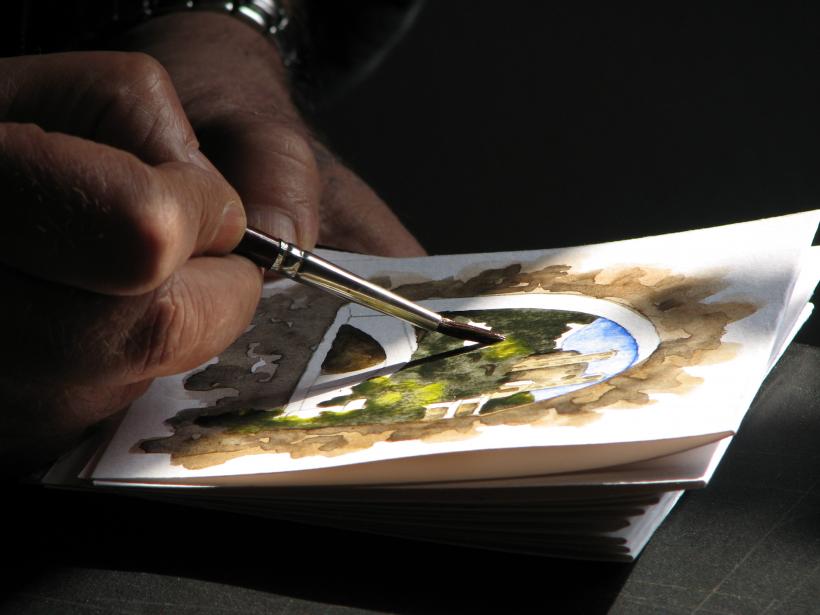
If suffering makes for better art, the residents of Industry City (not to mention the already-gentrified neighborhoods of SoHo or Bushwick) in New York City should soon be churning out masterpieces by the dozen.
The rapid increase in pricing for rental studios in the neighborhood has driven out dozens of artistic types—with many lacking any other housing options. Is the Big Apple artist displacement an American trend?
Last month, while temperatures plummeted below zero, around 20 artists were forced out of their Detroit apartments. Dan Gilbert, founder of Quicken Loans and richest city resident, is the target of most of the blame—he’s been focusing on the area near Capitol Park (where the artists were living) as part of an upscale development plan, making way for luxury housing and an attractive entertainment district.
Across the ocean, the Art for All Society gallery had to shut its doors in Macau, China, after their rent more than doubled. The combination of a lack in pricing regulation, poorly-timed subsidy programs that are often too late to help artists in need and a lagging economy for those in creative fields all collided making closing inevitable:
"Local artists have revealed that they are thinking about leaving Macau as soon as possible. There aren’t enough career prospects; the art market is nonexistent and with such rents it is impossible to have an art studio or a workplace with proper conditions." -José Drummond, Vice President of Art for All Society
Ok, so artists being kicked out of their space isn’t just an American problem—but what does it mean for the quality of creation? Are displaced artists destined to craft sub-par work in the wake of their ousting?
Limiting studio space can have a direct impact on an artist’s approach to their craft, especially when it comes to large-scale works. On the other hand, isn't working with adversity to create beauty the role of the artist in the first place? Aren’t the best artists those who have been beaten down and yet come out the other end with their shining brilliance intact?
Not according to AL Kennedy, who views the caricature of the “starving artist” as absurd, to put it mildly. To her point, the struggle of the modern artist to survive is much more widely discussed by the public than actual works of art:
"Press coverage of the arts is never more enthusiastic than when it has managed to ferret out a ‘battle with demons,’ or at least a suicide attempt. This is partly because of the media's steadfast assumption that the arts aren't interesting—hence all those galleries, concerts, songs, poems, novels, cartoon strips, museums and T-shirt designs.
Doom is apparently fascinating: all of us can recall how much we've enjoyed spending time with people who are heartbroken and/or depressed, finding them stimulating, generous and emotionally supportive by turns. Assuming that making a sculpture would be assisted by despair or hunger in a way that, say, plumbing wouldn't be is absurd and insulting." -AL Kennedy, The Guardian
Ok, so the money-hungry capitalists leeching the life source out of creative communities are still the bad guys, but another factor has to be considered—more of us than ever are trying our hand at the arts. Going back to America’s art capital, 108,000 New Yorkers called themselves artists in 2000; the number jumped to 124,000 in 2010 (and is arguably a much lower estimate than exists in reality). Inevitably, more people crowding finite, now-overpriced space is a recipe for broken hearts and empty wallets. That being said, these societal roles—like artists—make an impact that reaches far outside their own communities:
"When you look at a successful industrial renovation that is focused on the innovation economy, artists play a very important role...What we need to do is blend that with the maker community, with job-generating industries, and this is really our top priority." -Andrew Kimball, chief executive of Industry City
Artists beautifying space only to be overthrown by bankers and tech nerds is hardly anything new, with San Francisco being one of the most talked-about battlegrounds (while rent adjustment has varied throughout the city, many art communities are those at the frontline). It isn’t only traditional creatives suffering, either—innovative start-ups are also struggling to find suitable workspace. As the epicenter of the bohemian lifestyle, what will happen to San Francisco if we push the artists out? History is an ominous threat; we’re already eating our burritos in the Mission District next to Mark Zuckerberg (Seriously, guy? You could buy a f*cking mountain outside of the city and helicopter in for one of these delicious Mexican treats and totally skip the part where you quadruple everyone else’s rent...)
While we have no fears that art as a whole can survive anywhere (after all, Burning Man is held in a desert every year) we are seeing an unprecedented departure of artists from their longtime areas of residence—and can’t help but wonder if it won’t be long before New York, San Francisco and others become less magical and more “logical,” with the bottom dollar being the top concern. Will our suburbs become the new speakeasies?
If so, grab your station wagon, we’ll bring the booze.
Image: Wikimedia






